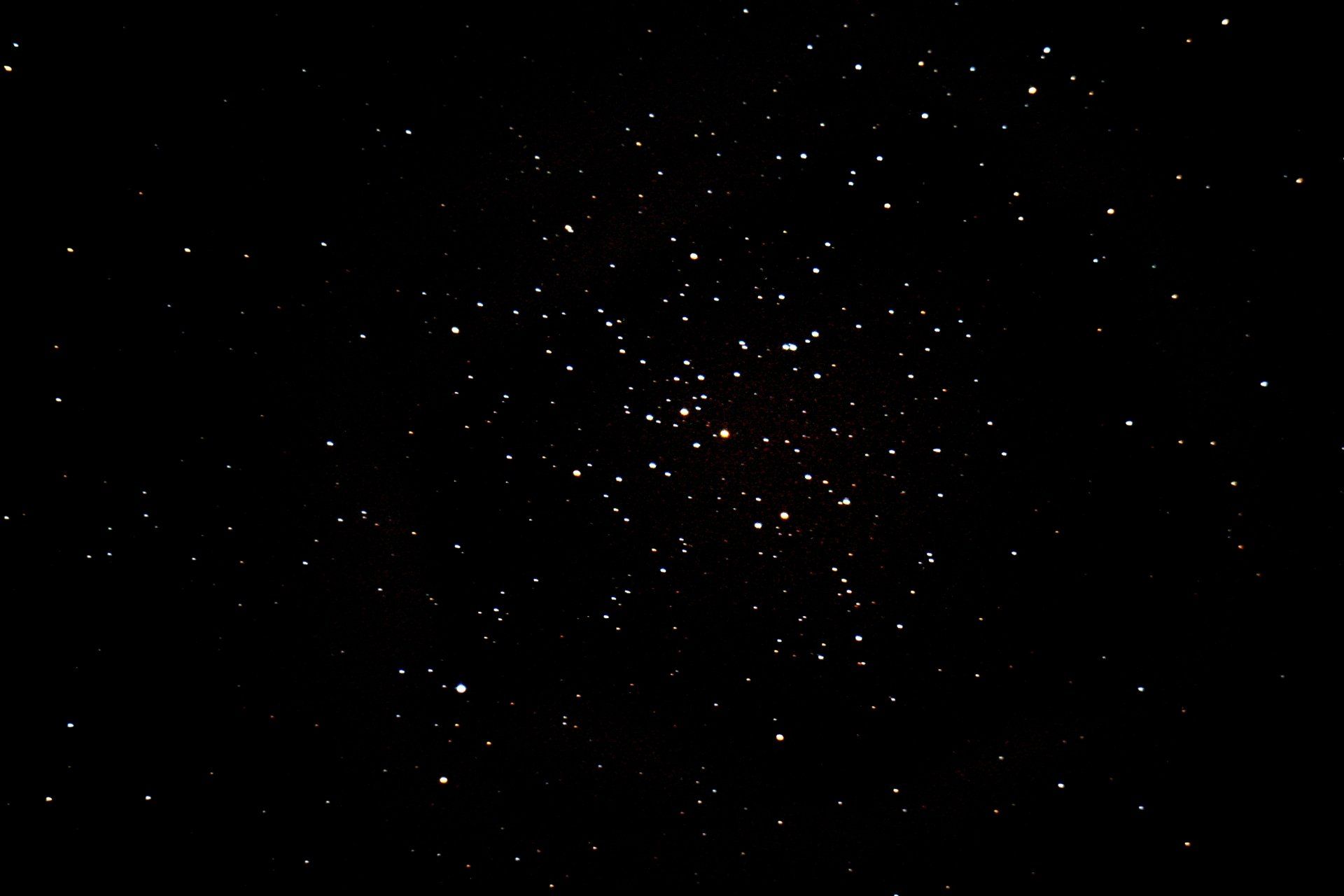DSO of the Month
Messier 41 (NGC 2287)
Due south at 23.09 (GMT) on 15 December
Position: 06 hr 46 min -20 deg 46 min
Image: Martin Gill (HAS)
There are well-known DSO and those which are perhaps not as well-known as they deserve to be. In the latter category I would include the star cluster Messier 41 in Canis Major. Under good dark sky conditions it may be visible with the naked eye and it may have been known to the Ancient Greeks. In modern times, it was first discovered by the Italian astronomer Giovanni Batista Hodierna in the mid-seventeenth century, but it only became prominent after it was listed by Messier in 1765. It is half a degree wide and roughly circular. It is also bright and fairly dense and to my eyes at least, it presents a very pleasing view, especially in binoculars or the finderscope of a telescope. In the telescope it has a spider-like appearance (see the above photo) with a central body and at least five legs. it has a prominent orange K class giant with a magnitude of 6.9. I suspect the relative obscurity of M41at least in the UK is a result of its low maximum altitude in Britain. Even when it is due south, it is less than 18 degrees high, barely over the roofs of our neighbours’ houses. If it was as high as the Pleiades in British skies, it would be better appreciated. It is almost exactly four degrees below Sirius and almost directly underneath it. It is therefore possible to see Sirius and M41 together in 10x50 binoculars. In practice I find it frustratingly difficult to find. Using binoculars (or low magnification in a telescope), try to triangulate it by going down from Sirius on one side and go to the next bright star to the right (west) of Sirius, namely Mirzam (Beta Canis Majoris) and then go down at an angle to a less bright star (Nu2 Canis Majoris) and then go on as far again at the same angle. The two lines should meet at M41.
